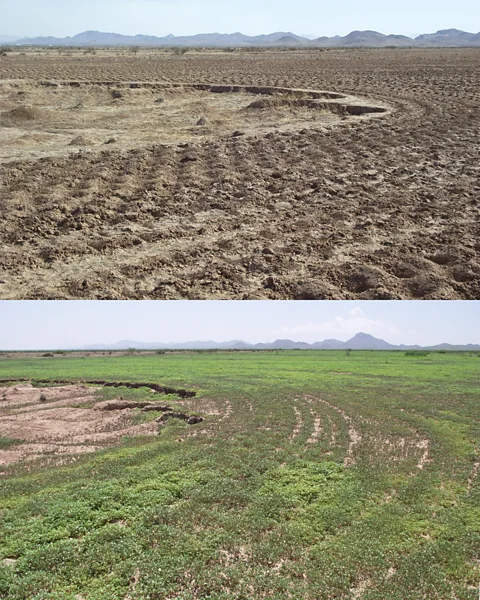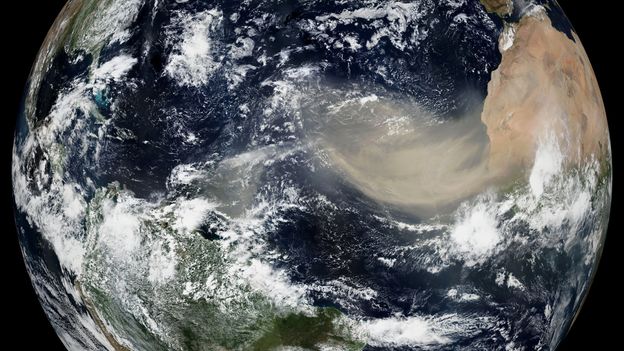 NMDOT EnvironmentalIn New Mexico ecologists hope to reverse desertification (Credit: NMDOT Environmental)
NMDOT EnvironmentalIn New Mexico ecologists hope to reverse desertification (Credit: NMDOT Environmental)
In June, researchers at the University of Texas at El Paso conducted an analysis of 1,200 acres (486 hectares) that were plowed, imprinted and seeded in June 2022. Using satellite imagery, they compared the change in growth before treatment and three years later. The treated area saw a 41% increase in vegetation cover compared to a 4% increase in non-treated, grazed sections. Whether this vegetation growth has resulted in fewer dust storms, however, is yet to be determined.
In a separate study from March, researchers found that most growth occurred from seeds that were in the soil prior to the seeding. “They were simply waiting for the right conditions to germinate,” says William Hutchinson, the roadside and community design manager for the Environmental Bureau at NMDOT. “Maybe we don’t need to put seed down, which is expensive, and instead let nature take its way.”
The project’s parcel is split among private landowners, the Bureau of Land Management, and the State Land Office. While the efficacy of the approach is clear, the politics in implementing it is less so, says Hutchinson. For the NMDOT, long-term mitigation means protecting revegetated areas from disturbance. For the other agencies, keeping the areas multi-use, per their mandates to maintain the land’s commercial viability, means allowing cattle to graze on the growth that remains.
The recent analysis of vegetation cover also measured a third category – an untreated area protected from grazing – and found a 22% increase in vegetation cover, demonstrating the significant impact that cattle has on growth. The Bureau of Land Management is considering issuing conservation leases to NMDOT, which would allow the transportation agency to purchase certain plots for restoration and exclude grazing.


